|
By December the majority of leaves have fallen away from our trees. Stand in woodland at this time of year and the heavens have been opened to our upward gaze. We peer up through swaying branches, the wind driving flocks of tumbling clouds. Indeed, deciduous trees weather storms and Winter gales that much better through not having the miniature sails that make up a full canopy. Looking at the exposed limbs and backbones of trees in December we are more keenly aware of the corresponding root structure anchored within the ground. Trees in December bring a timely reminder of our vulnerability and also our resilience. In a moment the December landscape can vacillate between muted, ethereal shades and harsher blocks of black and white. The mountain hare and ptarmigan make use of this monotonous landscape, their winter coats a brilliant camouflage. By December the light has faded from the land, the sky and from the leaf litter around our feet. We are all too keenly aware of the Sun’s absence, drowsily emerging to hover low in the sky, ready to dip back into the Earth’s embrace at the earliest opportunity. However, There are splashes of colour in Winter. On occasion, we are treated to the pink glow of a morning sunrise or the brilliance of golden sunsets. Frosty mornings, reveal fields and hedges decorated with white icing shining beneath vivid blue skies. These days are to be cherished as they are achingly short. We still have the ever greens of Yew and Holly, there berries blood-red reminders of that which still courses through us all despite our numb extremities. We are blessed by the Robins determination to sing throughout Winter (one of the few birds that do), its vibrant breast puffed out in defiance of the cold. Stark and brittle teasels provide food for goldfinches, who descend en-masse in 'charms' to feed on the seeds hidden deep within the prickly heads. These skittish birds, with their reddened faces twitter and fuss from hedgerow to hedgerow. On moorland, the prickly gorse may still bare its bright yellow flowers even in December. For me, there is nothing so wonderful as to sit upon a hill in December and watch large grey clouds amble across the sky. At glorious moments shafts of golden light descend from the heavens to illuminate some favoured patch of ground, inspiring fantasies of the light marking some auspicious moment of holy intervention. Even inside our houses, divine sunlight is caught for a little while longer in our candles and festive decorations. Many deities are purported to have been born around the Winter solstice, for at this moment there is only one, inevitable way to go in the circle of life - upwards! For many, Christmas brings many expectations – not least the image of blissful family unity. It can also be a painful reminder of the life we wished we could have - the aching gap between what we wanted and that which we actually received. The parents that were never there for us or the children that disappointed us with their apparent indifference. The pressures of being cooped-up together can bring these resentments to the surface. We soon become all too aware of our differences as the bonhomie is soon discarded like torn gift wrapping. The rub and chaff of relationships can become akin to the grate and creek of branches against each other in icy, northern winds. Perhaps it would be better to bestow gifts on each other in the form of compassionate acts of acceptance and forgiveness rather than the latest computer game or fashion accessory. I would offer that the festive period can also be a time to consciously count our blessings even if at first they are not immediately apparent. The process of deliberately recounting life’s gifts can do wonders to engender a better frame of mind. Art Making: The turning wheel Creating circles from natural materials at this time of year is wonderful way of reminding ourselves that we are at the lowest point of the great turning just before the upward rotation begins. Once you have created your circle, fill it with objects – or even candles – that represent all that you are grateful for. Sit for a moment, breathe in the stillness as you enjoy all the gifts that nature bestows on all of us.
0 Comments
Take a walk through woodland in November and it can sometimes take longer to find the usual well-worn pathways. Whilst the tracks may be obscured by rusting leaves we are also presented with the opportunity to make our own path. Shuffling or kicking our way though the leaf-litter can have us transported back to our childhood in an instant. Cold air rubs at our noses, as we snuffle and rustle along our way.
We mostly think of pathways crossing over land, but they are also carved through water and drawn upon the sky – passageways that have been repeated for millennia. Migrating birds arrive from arctic regions once their breeding season is over. Waders and wildfowl can be seen on our lakes and estuaries, their invisible, sky-bound tracks now replaced by more down-to earth footprint trails across the mud flats. Salmon return to spawn, their famous, final throes ensuring the cycle of life is started anew. Redwings and fieldfares arrive to feast on plump hawthorn berries. A delight to witness, they are easily disturbed if you approach to close. Flocks of roaming tits and finches (such as chaffinch and brambling) flit and dart from hedgerow to hedgerow in search of food. Science is only just beginning to offer us answers to how these amazing creatures instinctively find their way – year-after-year to the same location from disparate points around the globe – using the Earth’s magnetic fields. Whilst these animals and birds have their favourite place to reside on our shores, we too often have a preferred landscape: the open expanse of grasslands, the confines of woodland, the exhilaration of the mountain peak. We have many different ways of navigating these landscapes and a myriad ways we connect to them, connections that form landscapes in our own minds. Much of our language that we use to describe our mental processes reflects our passage across the physical terrain. We can describe ourselves as being stuck in a rut, when our habits – one’s we seem unable to shake – stop us making the necessary changes to our lives. Our minds may wander off or we may become a stick-in-the-mud – our values no longer in step with contemporary thinking. Loosing one’s way or walking around in circles denotes actions of futility. Whereas, a walk in the park – a task with which it is easy to engage – is very different from taking a walk on the wild side. Walking off into the sunset can mean we are about to start a happy, new life. The golden glow of sunsets is often used in pictures (moving and still) to describe the warm-glow feeling of having over-come numerous obstacles to achieve our goals. The word depression can either describe a hollow in the landscape or persistent, sad feelings – either way, we are in a place filled with dark shadows. On life’s journey we may be described as carrying too much baggage, a someone judgemental description of being burdened with unnecessarily emotional challenges. We may be aware that we carry a burden, seeking release but cannot find a way to let go. It may take us sometime to discover exactly what it is that we drag around with us. Finding a way to make our journey easier often starts with exploring how we came to pick up the unnecessary psychic load in the first place. Our baggage can sometimes have been passed on to us by our parents. Tired of their own burden, back bent with the effort, they unwittingly try to pass on their emotional encumbrances on to their children. Unwanted aspects of themselves, old psychic possessions– shame, humiliation, hurt – are heaped and piled on to the next generation’s shoulders. It is only when we can recognise the procession of unwanted feelings across the generations can we free ourselves, finally relinquishing our emotional baggage. Art making Making our way across a landscapes can provide powerful metaphors for how we navigate life’s challenges. Life is often about finding a balance between carving out our own individual path and sometimes walking in someone else’s footsteps. How would you use your favourite natural landscape to express your own journey? You may wish to shuffle through autumn leaves; make subtler tracks across dew-laden meadows or build a stone pathway across open ground. As you make your path you may wish to consider what peaks and troughs you have encountered on the way; when you have struck out for yourself or followed in the footsteps of others and if you are ready, perhaps contemplate that which you would wish to let go of as you weave a path through time and place. The greyer mornings of October are brightened by the sight of trees beginning to flush with sunrise hues. Although there can still be warm days, on October mornings we can start to see our living breath forming plumes of mist, heralding colder days. Some welcome the colourful transition, wrapped in a cosy feeling. For others there is the disheartening start of SAD symptoms, as our internal sunshine diminishes and our mood hollows out.
In October, the winds begin to gather strength. There is something elemental about being surrounded by the living wind. Others find it more of a challenge, feeling boxed and bullied by the Autumn gales. In amongst the trees, the old branches creak and groan, as the wind shushes and hushes through the tree tops. Fewer birds choose to sing at this time of year - it is mainly the raucous call of crows that we hear as they stagger about in the buffeting air. Deep in the woods, the air carries damper traces, hints of decay in amongst the crinkling leaves. Whilst this decomposition may hint at shadowy death, there is the excitement of finding the magical shapes of fungi that blossom in the crevasses of trees, jut boldly from the sides of trunks or erupt from the leaf litter. (On open fields, dark circles of grass or fairy rings, are tell-tale signs that blossom-white fungi are about to push into the Autumn air). At first glance, it may appear that the fungi are preying upon the trees. However, these beautiful fruiting bodies, seemingly built upon decay, are just the visible part of a larger system. If we could peer beneath the surface, we would find that endless arrays of tiny fungal filaments (known as hyphae) that form a living system. The fungi work in intimate partnership with the trees: the fungi feed the roots, whilst the trees provide the dead materials for the fungi to feast upon. This union is vital for the health of woodland. (Fungi, through their living processes actually generate heat – allowing them to flourish in colder October). What appears at this time of year above ground is the spore-bearing part of the fungi – just one part of this endless cycle of life and death. This closeness of life and death finds expression at this time of year in the Celtic festival of Samhain. Later to be known as Halloween, it was said that the veil between the living and the dead was at its thinnest and we could commune with our ancestors. This was a time to honour our elders, both alive and dead. Moreover, fungi provide a potent symbol of our hidden depths, our unconscious, unseen processes that allow us to function in the world. However, our unconscious is not just a repository for all that we fear – not least death, but a place where psychic processes take place that allow us to flourish, like our creativity and lust for life. It has been said that in order to live life to the full we must come to terms with the inevitability of death. However, most of the time we are only dimly aware of what goes on beneath the day-to-day thoughts and feelings we have. It is only when, like the fruiting bodies of fungi, are we made aware of what lies beneath - when something that cannot be ignored pushes to the surface. This could manifest itself as a recurring dream, intrusive thoughts or a persistent feeling that one is not functioning too well in the world. It is at this point that we need to find a way of making connections with the myriad of psychic hyphae that populate our inner world. Through understanding what lies beneath, we can engender transformation, bringing more colour back in to our life. Art Making At this time of year we are gifted with leaves painted in a myriad of hues. Some leaves hang on to their greenness, whilst others quickly transform to deepest red. With this art making you are invited to gather the different colour leaves available to you. Using your leafy palette, arrange your leaves in a colourful circle, gradually changing the hues from one to another as you progress. Once you have completed your ring, stand within it, turning slowly to reflect on its gradual change in colours. As your revolve, bring to mind the cyclical nature of life and death in the woodland around you. This is your chance to contemplate the never-ending cycle of life of which you are part. Look across open parkland on a September morning and you will see thousands of tiny golden stands undulating across the dewy grass. In sheltered valleys, lingering mists hang glittering pearls on newly-formed webs. Sitting noticeably lower in the sky, the September sun casts golden shafts of light across the land. Some of these rays get caught in the circular cobwebs that decorate our hedgerows and gardens at this time of year. At the centre of each web sits a plump orb spider – monstrous yet beautiful – provoking both fear and wonder.
The marvellous webs we see at this time of year are made by the Garden Cross spider. Their intricacy gives the appearance of being a product of cognitive powers rather than instinctual geometry. Amazingly, the spider eats its web completely at sunset, recycling the proteins contained in the silk re-absorbing them into its body. Over night a new web is woven, before the rise of the sun heralds a new day of static hunting. The spider’s several spinnerets produce different kinds of silk – some strong for the lines forming the outside framework and anchors of the web; some the robust radial axis into the centre; some forming the centre on which the spider sits. All of these are not sticky. Only the main circular web holds the droplets of glue which capture the spider’s prey. To avoid being caught in its own trap, the spider’s feet secrete an oily substance resistant to its own glue. There is one strong main line which travels through from one side of the web to the other. This is the signal wire on which the spider rests its front pair of feet - sensing the vibrations of trapped insects. This line of communication allows the spider to launch its attach on the ensnared insect. Sometimes we get can get caught in a sticky web of our own making (often in response to our environment) and we can end up feeling very stuck. Our psyche is constructed of infinite psychic connections and sometimes we seem unable to make sense of the myriad strands. For many, a therapist is sought when one feels the need to take on a new identity – sensing a need to shed old, out-dated, constricting skin. Sometimes we spin a shroud for our feelings and memories of which we are ashamed and hide them away in some dark and deathly-quiet tomb. We dare not speak of these things lest we incur the humiliating judgement of others. It is only when we feel safe enough to speak our shame to someone that we truly trust can we then accept ourselves with compassion. You would think that spiders with their eight eyes, sitting at the centre of their web, would have a panoramic view. However, they actually have quite poor eye sight. They sense the world around them through vibration: sometimes we feel things instinctively rather than clearly seeing what’s around us or within us. Often, freedom is born from a change of perception, requiring that we re-frame things in order to look at them differently. At the centre of our psychic web sits our core beliefs. They do not possess any subtly of shade – only light or dark, operating in terms of polar extremes: we are good or bad; ugly or beautiful; rich or poor. However, it is only when we find a way to get our head and heart to sing together can we then begin to shift our core beliefs. Through this process, we can begin to see ourselves in a new light and perhaps start to perceive the world differently. We can learn how to accept our monstrosities and celebrate our beauty. The Art of Making a Web You are invited to take a ball of twine out into a natural place of your choosing. Look around and find a tree that you are drawn too – preferably one with accessible branches. Weave yourself a web in the branches. When you are satisfied with your creation, think about aspects of yourself that sit in opposition. Find natural objects that reflect these aspects of yourself and tie them into the web. How do these parts of you manifest themselves? What is useful to you, what is less helpful? Can you accept some aspects in the here-and-now or do others need to change? What would you like to be different and how would you go about making the necessary changes? August - Nature’s fruitful harvest tempts us out into the fields and hedgerows at this time of year. In town and country, pockets of people, gingerly leaning over into the brambles, go in search of the ideal Blackberry. We are possessed with finding the perfect fruit, searching out the best hunting grounds. However, we are never sure of what we are going to get - a succulent, dark berry or a sour reminder that one can never be guaranteed a sweet return. Our need for perfect fruit has a great influence on the growing and harvesting practices of modern farmers. However, the vagaries of the weather can still destroy the most carefully nurtured crops. Any life lived to the full, generally involves an element of risk and comes with the threat of failure.
When our plans do come to fruition, there is a moment of savouring and relishing our accomplishments. But then we plateau and look for the next mountain to climb. To fulfil our goals we must start with the most helpful mind-set to apply to our cause. Turning failure into learning requires a particular way of looking at things — to see every experience as an opportunity for growth. Numerous books have been written on how to achieve success, claiming to be the definitive answer in five easy steps. But sometimes we have to take a more difficult road to find out what inhibits our full potential and diminishes our harvests. If, as children, we are only praised when we succeeded or reach a goal, the fear of failure becomes unbearable. We may strive for success but the joy of achievement can be short-lived (or non-existent) if our endeavours are solely to please someone else. Fear of failure can manifest itself in a number of ways. We may go through life terrified that we will be exposed as a fraud, not feeling as good as the role we inhabit. We may procrastinate or end our quest just as it nears its completion for fear of our accomplishments being judged too harshly. We may become perfectionists, chaining ourselves to impossible standards. Sometimes the seemingly juiciest blackberries all turn out to be sour. This is not because they haven’t had enough sun, rather, they grow on polluted land. As children, we can be infected by venomous criticism – a psychic poison that diminishes our confidence. We carry around fevered inner voices that berate all that we do. We can end up believing that our skills (or lack of them) are inherent. However, the wonders of modern educational psychology would suggest that out talents are not set-in-stone, they can be enhanced. By learning how to change our mind-set from one that is fixed to that of one that embraces our capacity for growth, suddenly new and fruitful harvests become available to us. Understanding ourselves can be a bitter remedy, self awareness can bring a loss of innocence. We are no longer the child who can attribute our success and failure to others . Instead we can take ownership of everything we achieve and of learning from our set-backs. When we find the courage to take responsibility for our actions, it is then that we create our own integrity and set of guiding principles. We can learn to sit just as comfortably with our positive attributes as well as our frailties. But this courage does not come from berating ourselves, rather from a position of self compassion, an acceptance of who were are as imperfect – that which makes us all human. When the head works with the heart we can start to nourish our skills and innate talents. Preparing ourselves inwardly mean we have more of a chance for the harvest to actually come to us. We stand ready in the hunt, to make the most of opportunities that arise or learn from life’s lessons. From this position of strength, we do not need to give up on the first sour blackberry but are ready to continue searching until we find the sweetest of harvests. The Art of finding success All too often, we seem to concentrate on our failures and find it more of a challenge to acknowledge our successes. (Especially if you are from a culture that holds modesty as a commendable attitude). You are invited to go out into nature and forage for objects that you find interesting and are a suitable size to fit into your hand. Ideally, they will be items that feel nice as well, for instance, a stone or feather. Find a quiet space in which it feels comfortable to meditate. Hold the natural object in your hand, close your eyes and bring to mind a moment which you are proud to name a success. Stay with the feeling this gave you and then imagine that this positive event is captured within the precious object in your hand. When you are ready open your eyes again. You are invited to take care of the object of your success. Take it home with you and repeat the process whenever you feel you need to shift your focus away from negative thoughts about your achievements. July and the start of the school holidays heralds a mad dash to park, pool and seaside. School yards fall silent, their high fences only serving to protect abandoned tarmac.
Vacationers, like the inevitable run of a river to the coast, make their annual pilgrimage to the sea. The rush for golden sands, at home or abroad, is pursued in cramped vehicles full of camping gear, toys and gadgets. We are not the only guests residing on our shores at this time of year. Gannets, Puffins, Kittiwakes, Razorbills, Guillemots, Fulmars, Herring Gulls and Shags are now ensconced in their hollows and ledges high on the cliffs. These avian tourists come from near and far but all demonstrate that squabbles, negotiations and romantic gestures are not confined to the human visitors! The whoops of children along the beach seem to stretch and distort in the hazy sunshine. Our minds become tidal flotsam, drifting in and out of contact with our surroundings. Within a few days our cares and worries seem to loosen their limpet-like grip. Soon we are seduced into a sun-kissed reverie; the pace of our steps slows and we sense our shoulders gently dropping earthwards. At the seaside, we sit at the periphery between two domains. The ocean has often been used to represent our unconscious world. However, during the Summer it seems harder to connect to this principle. The sun, sparkling on the surface entices us away from our deeper worries. We splash about in the shallows, dimly aware of the dangers of the deep. From a young age we are taught not to go too far out, lest we be swept out to sea. Films about mindless sharks play upon our primitive terrors, psychopathic beasts that reduce us to mere toys. However, aquatic predators become less terrifying once they are seem as part of the great cycle of life that exists in the oceans. Even the largest beast will expire, floating down to decompose at depth, eventually fed back as nutrients to micro-organisms that start the food chain once again. There is a human need to expand our knowledge outwards, more of a reticence to feel our way inward. We know more about the other planets in the solar system than we do of the ocean depths. We can also be fearful of the terrors that lurk in the depths of our own internal oceans. Repressed feelings of shame, anger and humiliation drift at the bottom of that dark world. Shipwrecks of regret rust away, hopes dashed on bitter rocks. Powerful currents may drag us helplessly this way and that, pushing us to behave in ways that defy logical explanation. There are potent lessons to be learnt from our darker depths. If we can find the courage to explore what lies beneath, the unknown can become less terrifying simply through loosing its mystery. We can begin to map the psychic topography and find reasons why we act the way we do. But not all that resides below is to be feared. There seems to be a universal delight at seeing the glistening curve of dolphins emerging from the waves. We seem innately connected to these amazing creatures. It is a challenge to identify exactly why we feel this connection. However, when you look in the eyes of a dolphin, there's a recognition. There is a sense of presence, of being considered by something other than human. It is difficult not to believe that the empathy we feel is not reciprocated. They are certainly a reminder that descending into the depths of our own psyches can also bring rich rewards of self awareness, acceptance and the opportunity to connect more fully with others. Art Making Beachcombing in the early morning is a wonderful time to discover the gifts of the ocean. Tantalising shells, pieces of coloured glass, strange pieces of wood, may have you wondering about their story and how long they have been in the sea. You are invited to go collecting art materials at the water’s edge. If you are not near the sea, you can forage near a river or pond. Once you have collected your items, arrange them in a circle in front of you. To which item are you most drawn? If you imagine the item represents an aspect of yourself, what would it be? What is your relationship like to this facet of yourself? You may want to consider why you were drawn to this piece and the story that it is telling about you. You may wish to repeat the process, choosing other items. Through this process, you can begin to get a sense of your hidden depths. In June, colours runs riot across the meadows, cliffs and dunes - the Sun inducing flowers to show themselves off to their full. Sparks of electric-blue demoiselles illuminate our riverbanks, whilst humming bumblebees weave their pollen-laden way from flower to hive.
All this life and activity feels like a natural celebration of the Summer Solstice. Paradoxically, the term Solstice is derived from the Latin words sol, meaning Sun and sistere, meaning to come to a stop or stand still. On 21st June, the Sun’s zenith does not move north or south as during most other days of the year, but it stands still at the Tropic of Cancer. (Whilst normally the hottest part of the year is yet to come, the current heatwave also seems to reduce activity to a standstill). Most wild herbs are fully mature by Midsummer and this is the traditional time for collecting them to store for winter use. (In Wales, Midsummer is called Gathering Day). This harvesting is epitomised by the gathering of St. John’s wort. St. John’s Day (June 24) close to the summer solstice, is the feast day that celebrates the reputed birthday of John the Baptist. St. John’s wort has dark-green leaves that when held up to the light seem to contain translucent windows. These windows contain the oil for which this plant is famous. As the herb infuses, the oil turns blood red - the energy of the sun pulsing in the oil. One can view such a miraculous plant as the traditional equivalent of modern anti-depressants. But perhaps this is seeing its effect only from a narrow, medical model. For those with seasonal depression, this bottled sunshine may aid their passage through the turning of the great wheel at its lowest point six months from now at the Winter Solstice. For some the vagaries of depression follow unpredictable calendars and timetables – their depression mixed with an over-abundance of energy and unrestrained activity. Just as the St. Johns oil stores up the sun’s energy, in an ideal world we would all have a store of healthy emotions, memories and self-esteem to protect us from depression and other emotional challenges. However, locked away in the cold shadows may be the origins of our more difficult feelings. Expressing these feelings may be terrifying, allowing the wild person to roam can feel unsafe. A tension may exist between our need for wild self-expression and the internal rules we live our lives by. For while we instinctively need comfort and protection, we also need to express our rage, grief and despair. The traditional masculine principle applied to the Sun at this time of year can be interpreted in different ways: the all-seeing Father versus the unfettered Wildman. Each has their positive and negative value. The authoritarian Father can also provide safety and containment to balance the Wildman’s unboundaried fire and need for mischief-making. In many traditional fire celebrations held around this time of year, it was a permitted opportunity to seek wild abandonment . However, this was all contained within a ritualised setting. Today, taking leave of ones connection to the drudgery of life is all too easy through manufactured and concentrated substances – anything from food to synthetic drugs. Balancing the two aspects of masculinity within us - the hairy Wildman and the respectable father – can be quite a challenge. In our adolescence we are hard-wired to challenge the rules, in an attempt to re-define ourselves as we move from child to adult. In adulthood, we live by unconscious internal rules that tell us what to do, how to act, who to love. Engaging with a therapist can provide a way to safely explore which of our unwritten rules are still useful to us whilst learning what are wild side really needs. Art Making In a natural space of your choosing we invite you to make two masks out of natural materials: the Wildman and the Father-figure. What aspects of yourself does each represent? 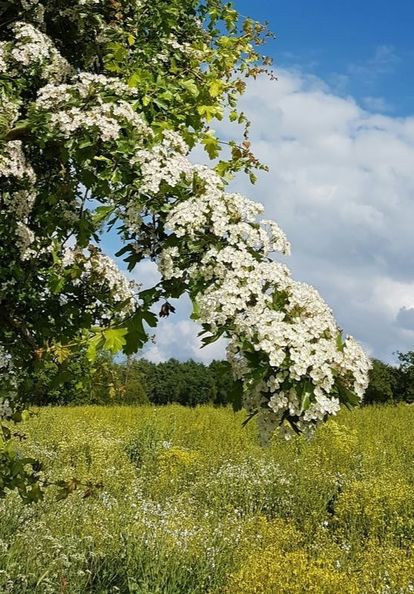 May can bring a spring to our step – we look outwards, feel our passions rise and push to the surface, bringing a blossom-pink flush to our cheeks. Our energy, like migratory Swifts seems to return after a long absence. My favourite aspect of May is the vibrant new green leaves which possess a verdant iridescence that can be found at no other time of year. We are witnessing the meeting of the sun and the earth – a re-engagement announcing the fullness of Spring. The large, green hands of Horse chestnut tree leaves sway delicately in the breeze – as the month progresses they will gain rigidity raising their spines to the sun. May blesses us with glorious pillows of Hawthorn flowers. The white (and sometimes pink) trains of Hawthorn reach out to us from the hedgerows. Traditionally, Hawthorn has been used to stand guard over holly places, protecting sanctuaries of the divine. Hawthorn is traditionally associated with wells and springs, marking the way to sacred, deeper passages. Hawthorn with its thorns and longevity, has for centuries, been used to create natural, hardy boundaries. May is often a time we leave our sanctuaries and reach out, using the sun’s libido to connect with everything around, reaching out to new possibilities, find the courage to commit to new things, opportunities, people. Reaching out to others is also an invitation to let others approach our inner sanctuary. The manner in which we do this varies greatly. Some proceed gate-by-gate, cautiously passing through successive boundaries as they get to know each other. Others rush headlong, leaping gleefully over one hedge after another. But to transgress a boundary without permission is a terrible offense for all of us. Hawthorn – as the name implies – possesses spikes. Our own internal thorns, our anger, is our boundary marker. Sometimes we fear using our anger, concerned that it may destroy the object of our ire. Anger turned inwards can lead to the suppression of all feeling and we may sink into depression. But anger has to find expression somewhere – used wisely it can be an energy for change, an opportunity for honesty. Only when anger is deliberately used to wound others does it then become a destroyer, rather than a protector, of boundaries. Hawthorn can be very long-lived. We innately build our own internal boundaries from a young age. Our personal defences exist for a very good reason, they can be part of how we survive difficult or traumatic events. However, sometimes, without us realising it, they can become outdated, causing us more problems than they resolve. Within a containing therapeutic space the origins of your defences can be safely explored. You may need to grow more boundaries, more hawthorn bushes, having previously under-valued your personal sanctuary. Conversely, you may need to create more psychic openings, allow others to come that bit closer to your inner sanctuary. It may even be that you need to be more respectful of the boundaries of others. Whatever, you need to do, nature can assist in your journey of self-discovery. Art Making In our busy world, we often don’t stop to reflect on how we live our lives. You are invited to visit a natural space of your choosing. Find a quiet place to sit. This is an opportunity to reflect on what sort of boundaries are present in your life at the moment. How do they manifest themselves? Are there any that you’d like to change? Do you wish to reach out more or have more time for yourself in your inner sanctuary? You may want to forage for natural objects to create a circle around yourself that expresses the nature of your boundaries. You may even what to create something that represents how you’d like your boundaries to be. The choice is yours. 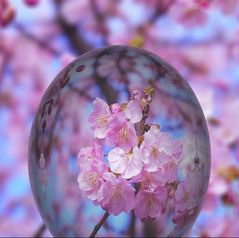 The gifts of Spring are upon us. At this time of year I often hear the expression: I don’t remember there being this many flowers last year! It is a certainly a challenge to decide whether this is true or not. However, every year our grassy hedgerow banks are soft-furnished with bouquets of Primroses and cumulus clouds of blossom festoon the cherry trees. Flurries of blossom petals descend to earth – delicate snowflakes providing an opportunity to express our gratitude that Winter is now a fading memory. Late April rewards us with carpets of Bluebells. These delicate woodland flowers have long been associated with constancy, gratitude and everlasting love. This is beautifully expressed by Anne Bronte: The Bluebell A fine and subtle spirit dwells In every little flower, Each one its own sweet feeling breathes With more or less of power. There is a silent eloquence In every wild bluebell That fills my softened heart with bliss That words could never tell. Regular acts of gratitude can not only be life-affirming but actually improve our emotional well-being if practised regularly. However, capricious April can in one moment seduce us with sunshine, then suddenly overwhelm us with a chilly shower. Living with unpredictability is a challenge for humans. But for some people, persistent uncertainty is an unwanted aspect of their emotional world - saturated by fears that suddenly seem to rise from nowhere. Through Mindfulness practice we can learn how to weather more uncomfortable feelings – watching them pass by like April’s darker clouds. It is impossible to out-run an April shower – better to be prepared to withstand the rain and await the brightening sun. Our hearts are drawn upwards by the spirals of birdsong that fill the April air - the rhythm of life picks up pace. In April we now stand firmly on Spring’s verdant bank, ready to enact our new year’s resolutions. However, it may be beneficial to pause for a moment before the heat of May launches us into action. The anticipation of gifts can inhibit the joy of inhabiting the present moment. April is a time to re-connect with what our heart truly wants: that which is most important to us. Engaging with nature reminds us that patience rewards us with fully experiencing the here-and-now. Many aspects of today’s world leave us in a permanent state of dissatisfaction. Pausing for a moment to express our thanks for all that Nature provides can be especially potent in April as we are presented with so many manifestations of the gift of new life. Chicks in the nest, lambs in the fields and the brilliant new leaves on trees. Young or old, we can celebrate being alive and for having our senses to experience nature in all its variety. Expressions of gratitude and generosity are manifest in April by the giving and receiving of golden eggs. However, relationships at any time can be an opportunity to exchange heart-felt gifts of kindness, understanding and support. Our capacity to connect with others non-judgmentally is a heart beat away from our ability to show compassion for all living things. Art Making Stillness is vital to provide balance to the quickening rhythms we experience at this time of year – for every breath we take there is always a corresponding interval of quietude. Even within our meditation practice we can pass through a turbulent layer before we find the deeper stillness nestled in the cradle of our soul. For this practice we invite you to go out into nature and find an egg-shaped stone. Make yourself comfortable in a quiet place of your choosing. As you sit, cradle the ‘egg’ within your cupped hands nestled in your lap. Close your eyes, bring your awareness to the earth coming back to life: the humming insects; the sunshine upon your face; the breezes carry the pungent scent of wild garlic. We invite you to contemplate the gifts that nature bestows upon you. Next, gently add to your reflection how you can reciprocate – what is your gift to nature? It doesn’t have to be a grand gesture – just something that is an expression of your gratitude. |
AuthorSimon Wodward, Indoor and Outdoor Art Therapist Archives
April 2017
Categories |

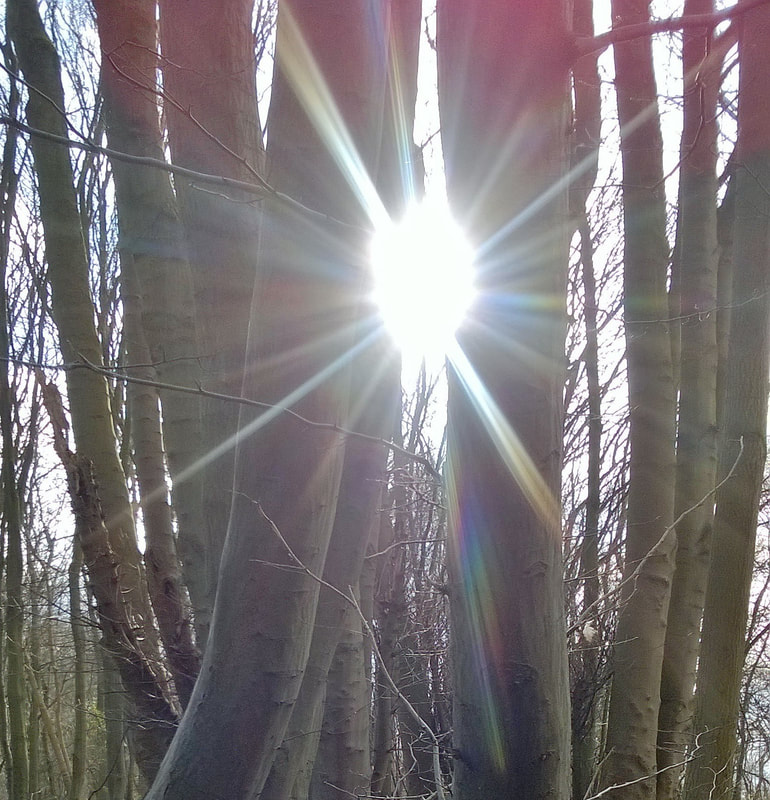
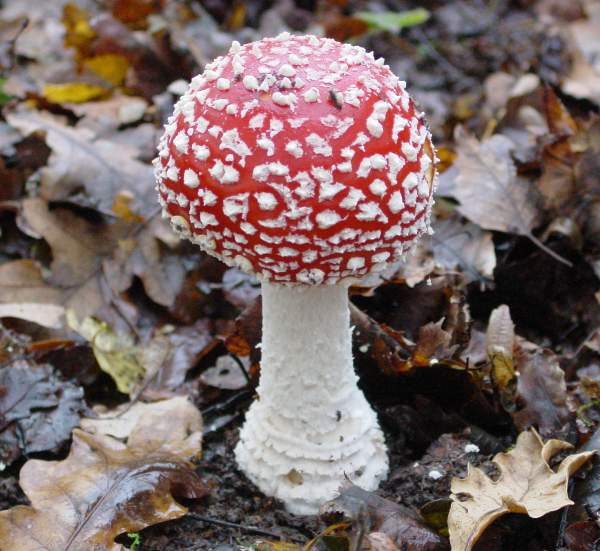
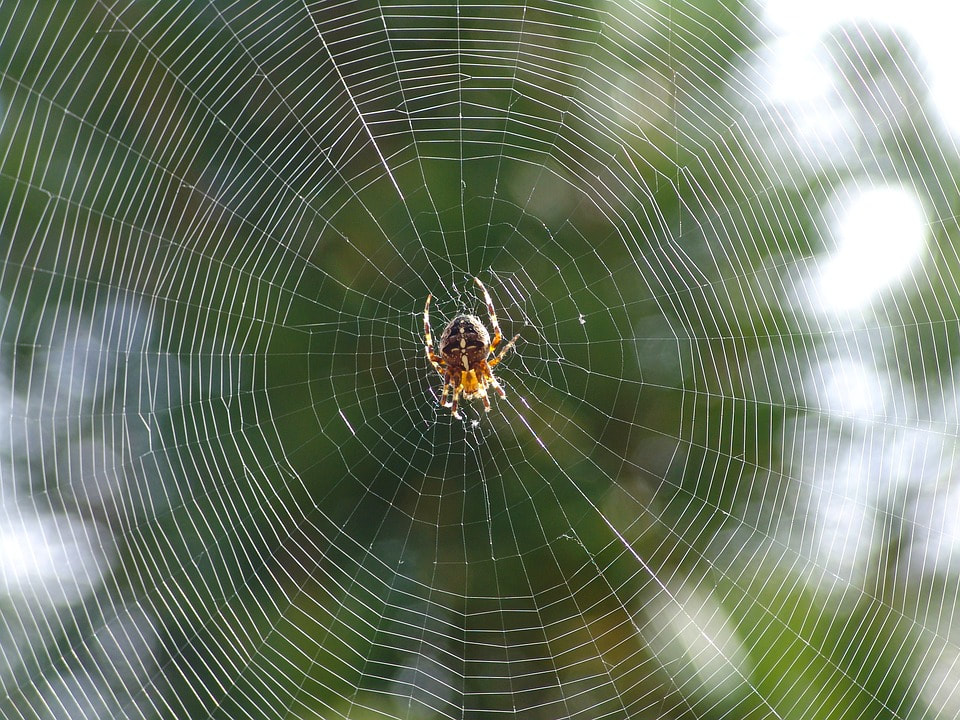
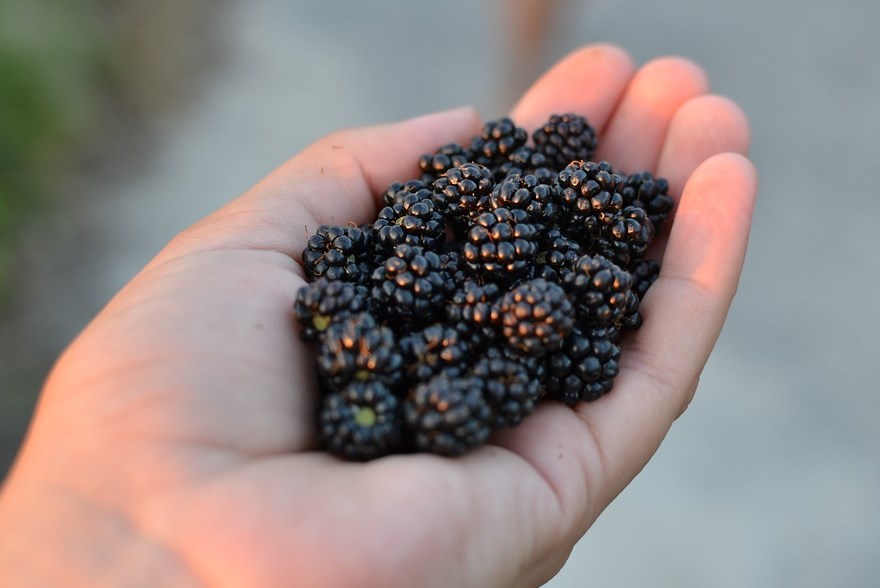
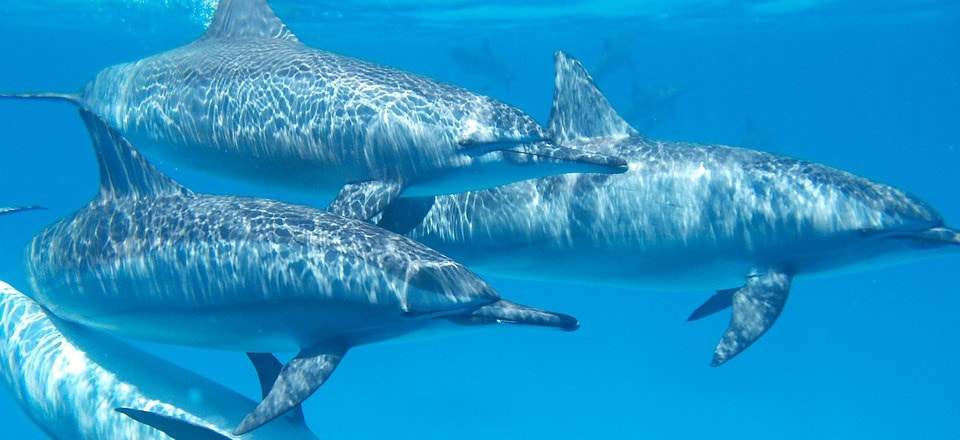
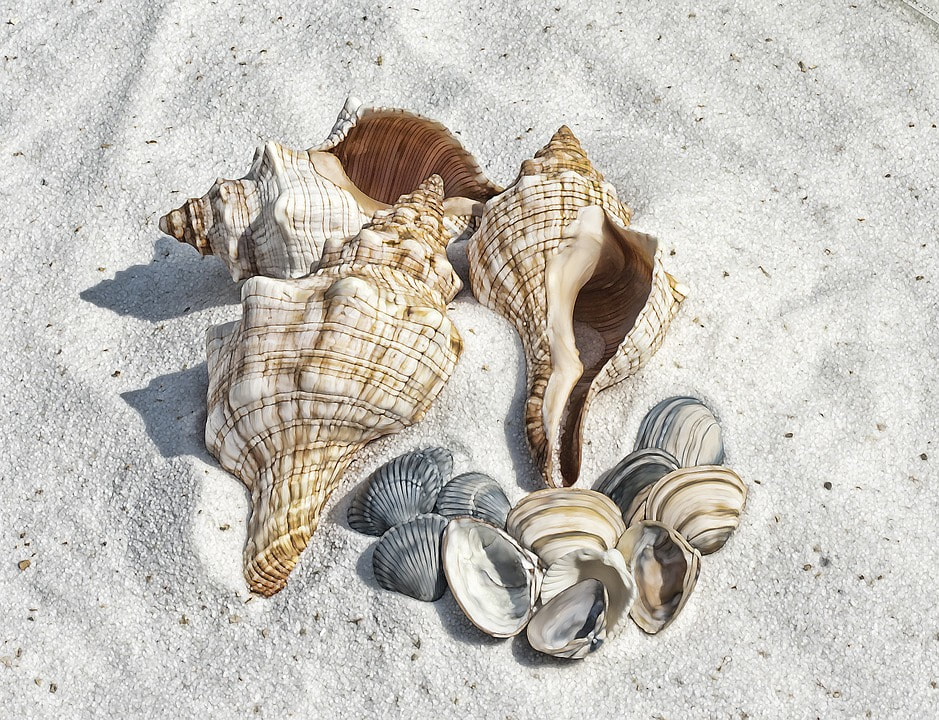
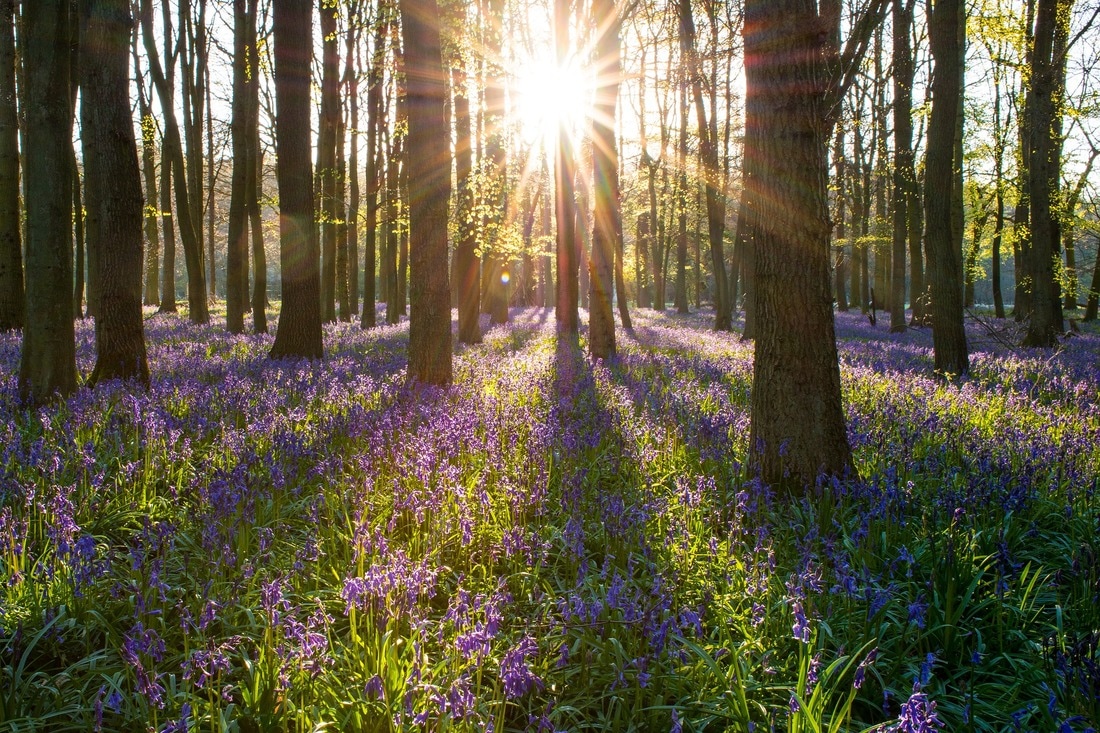
 RSS Feed
RSS Feed
